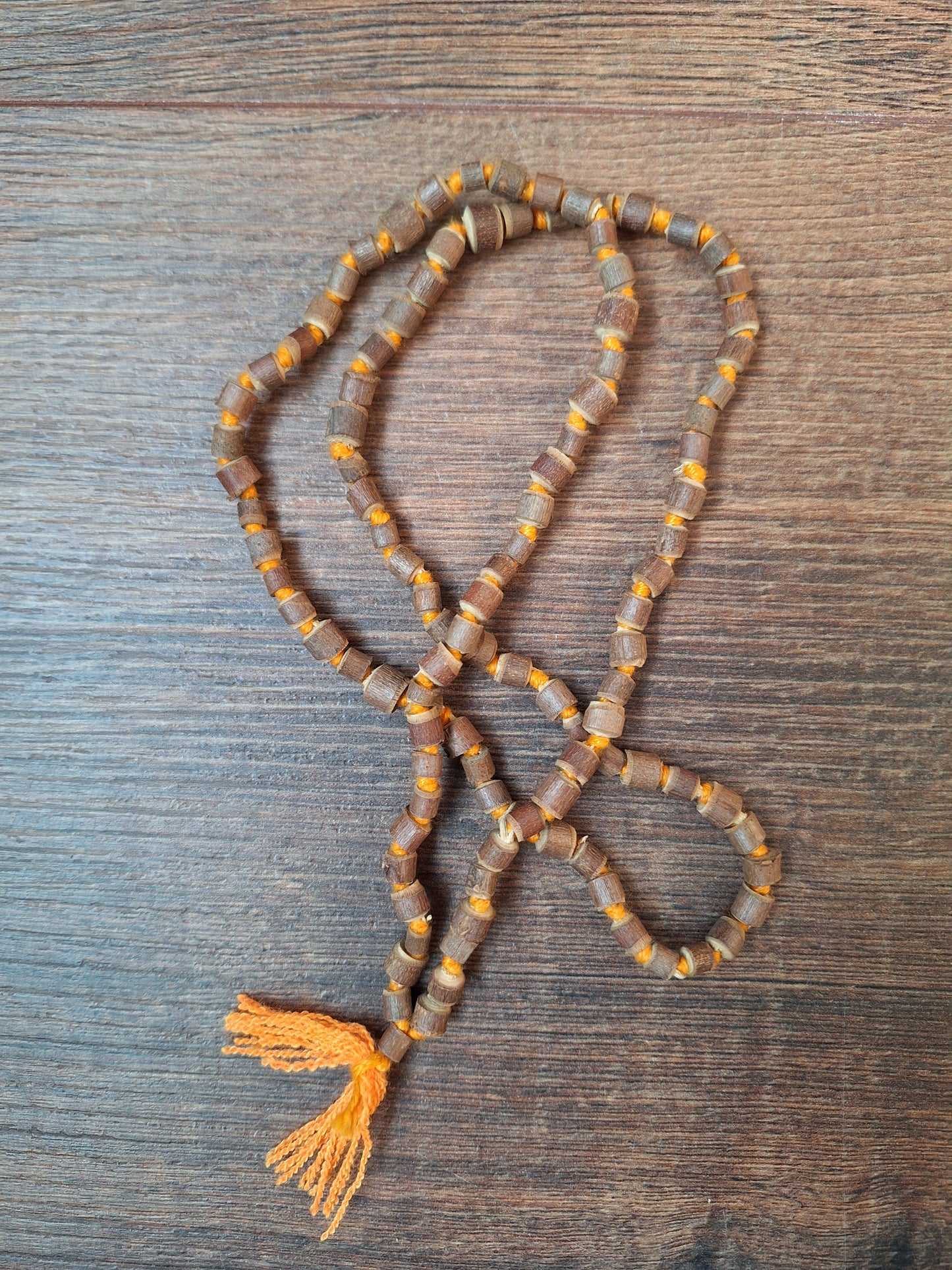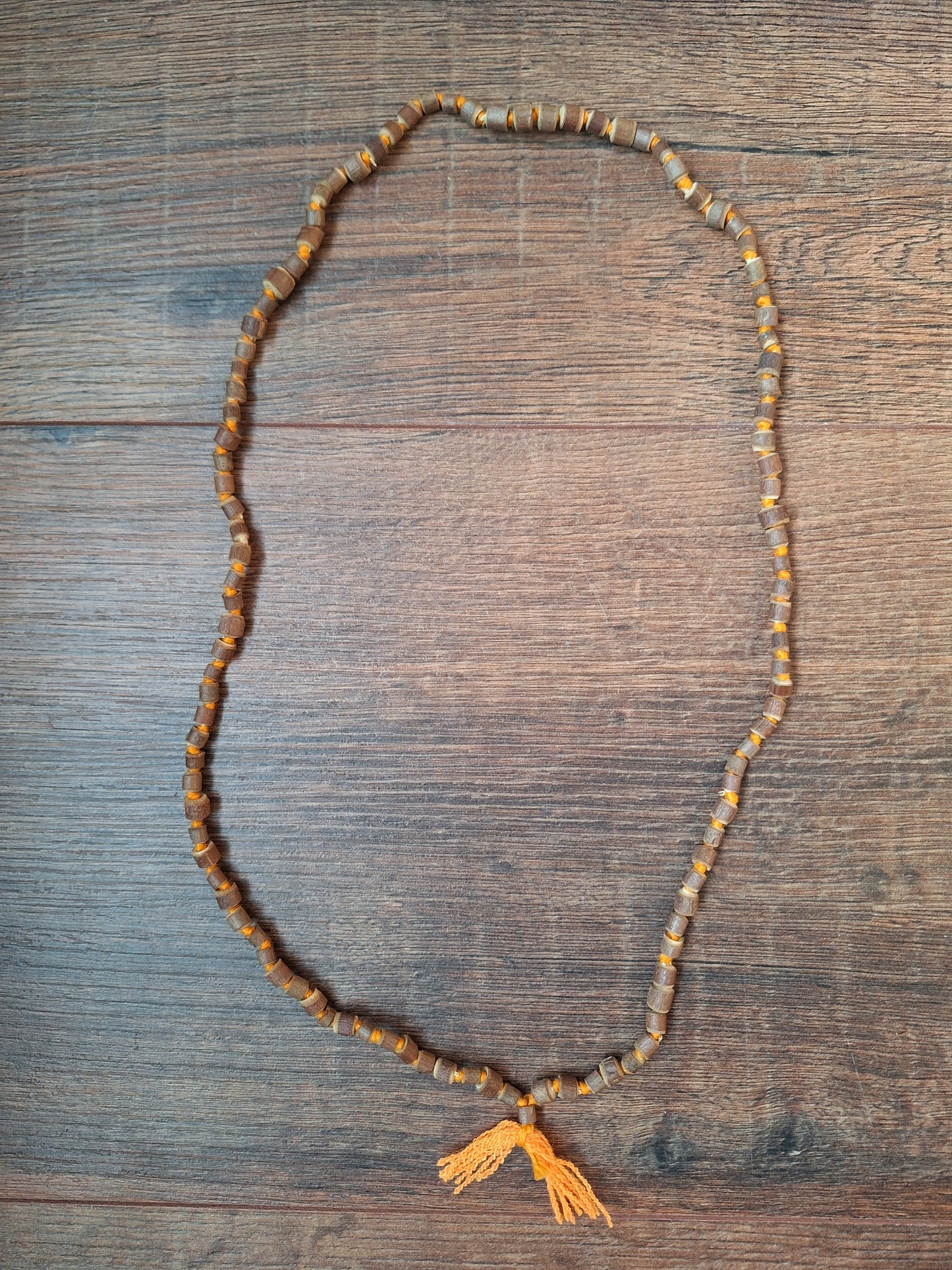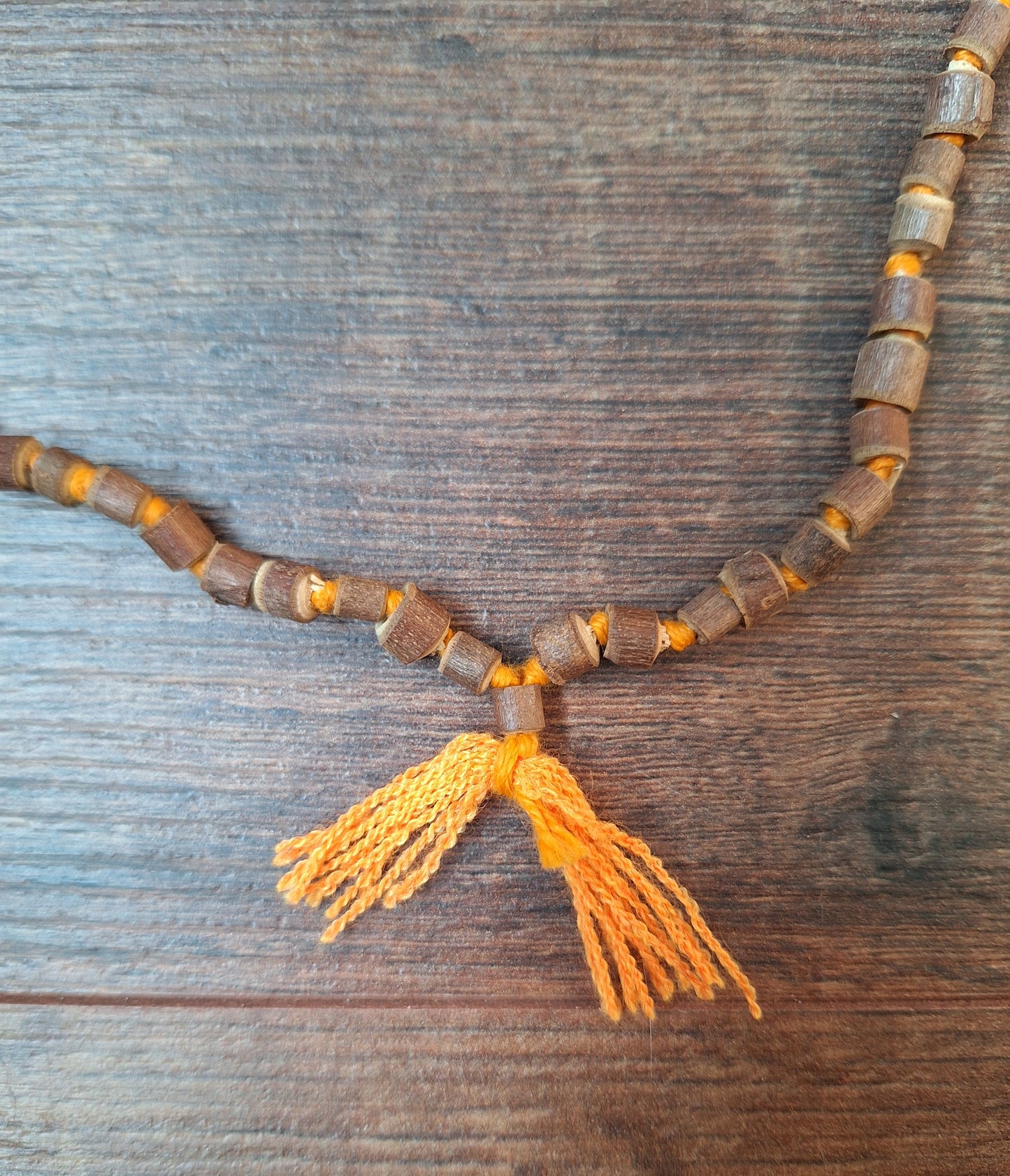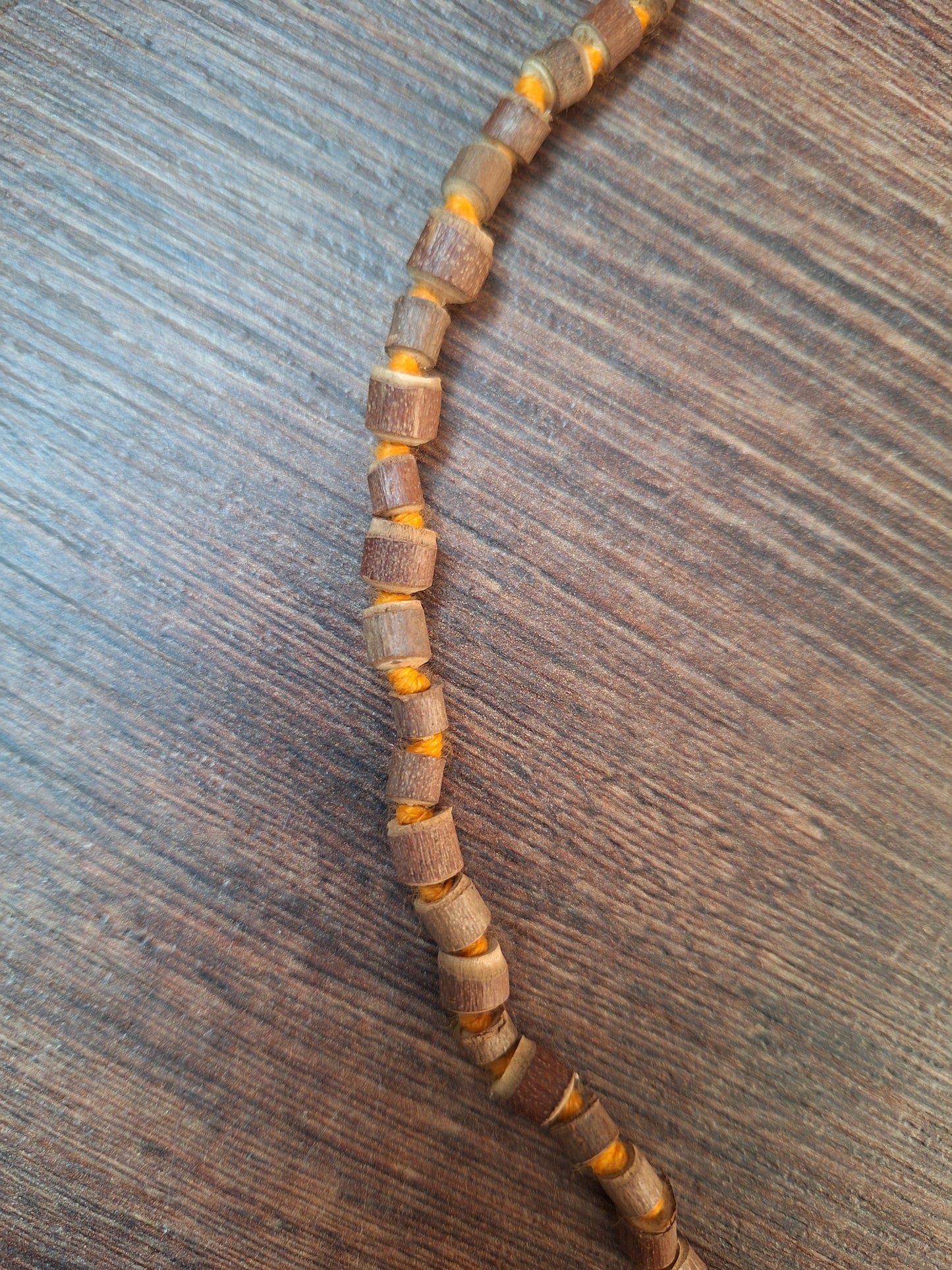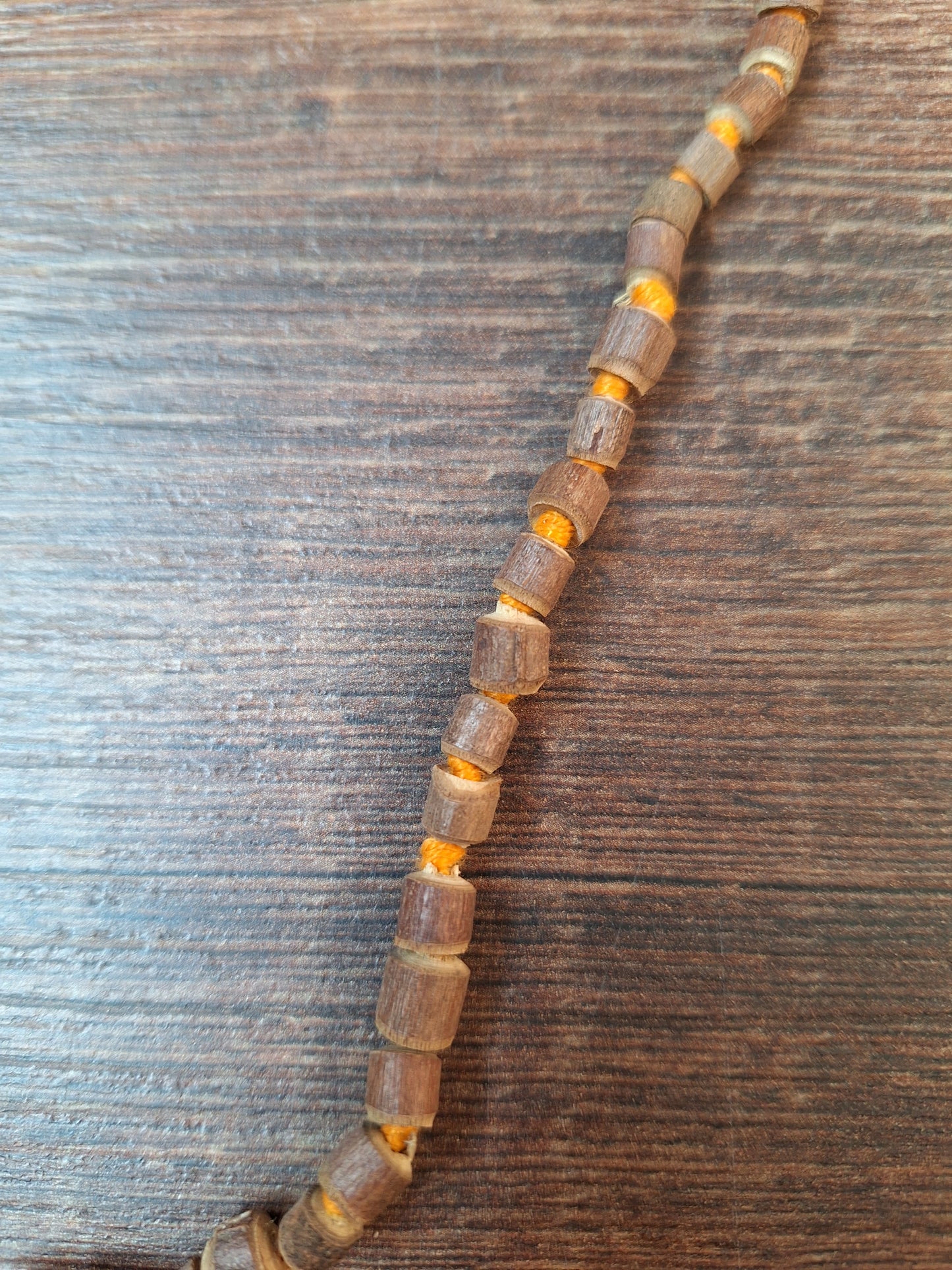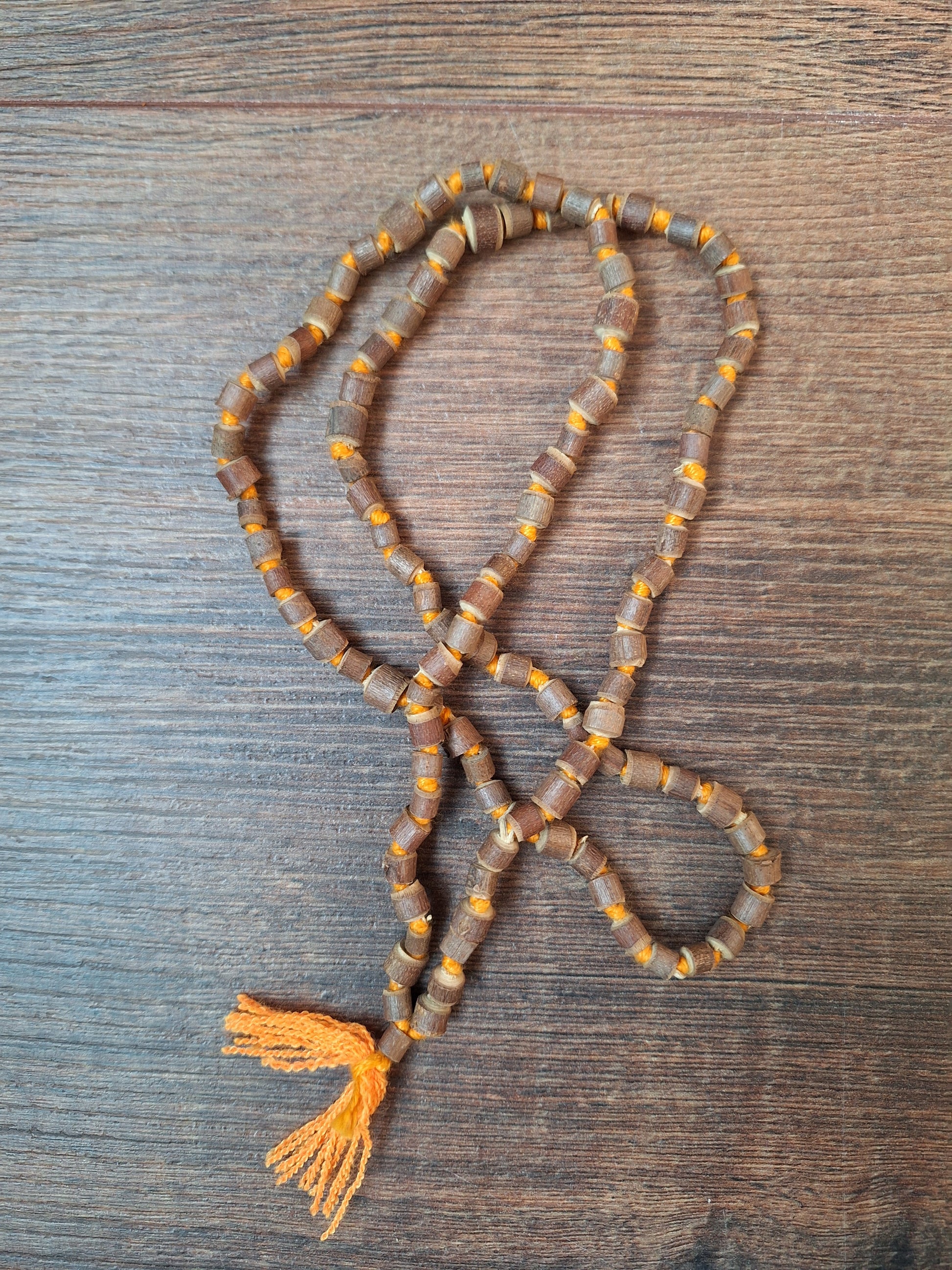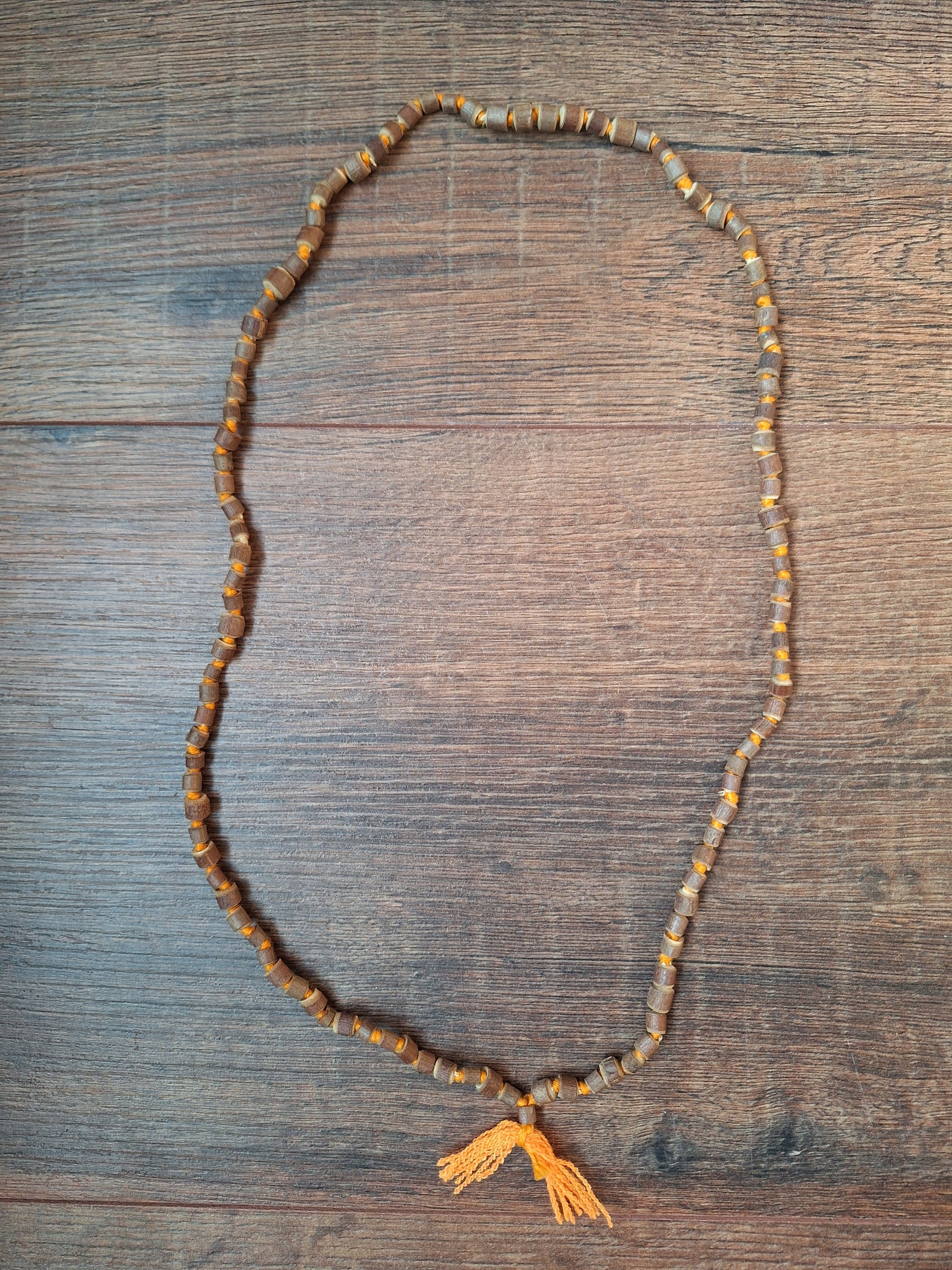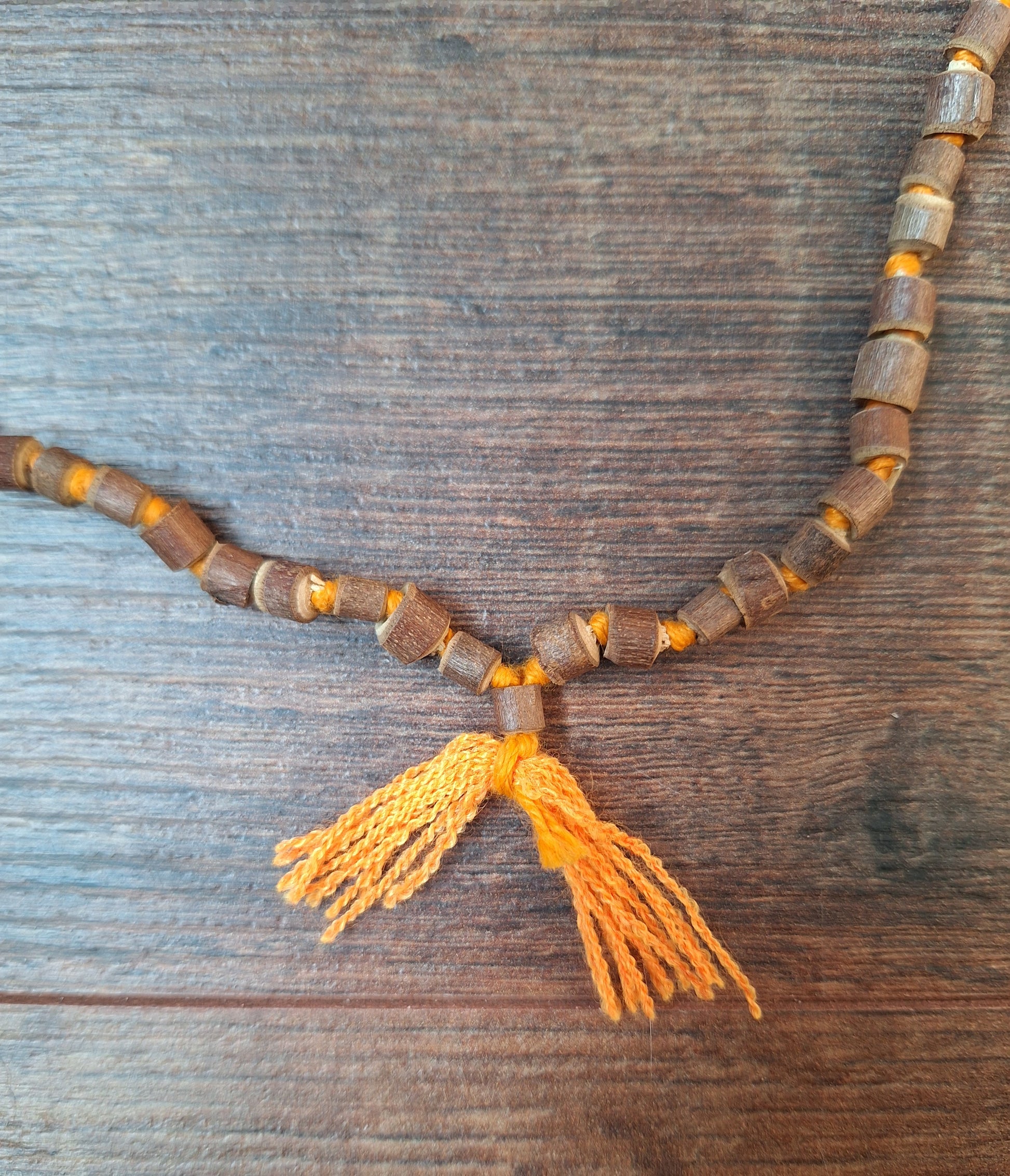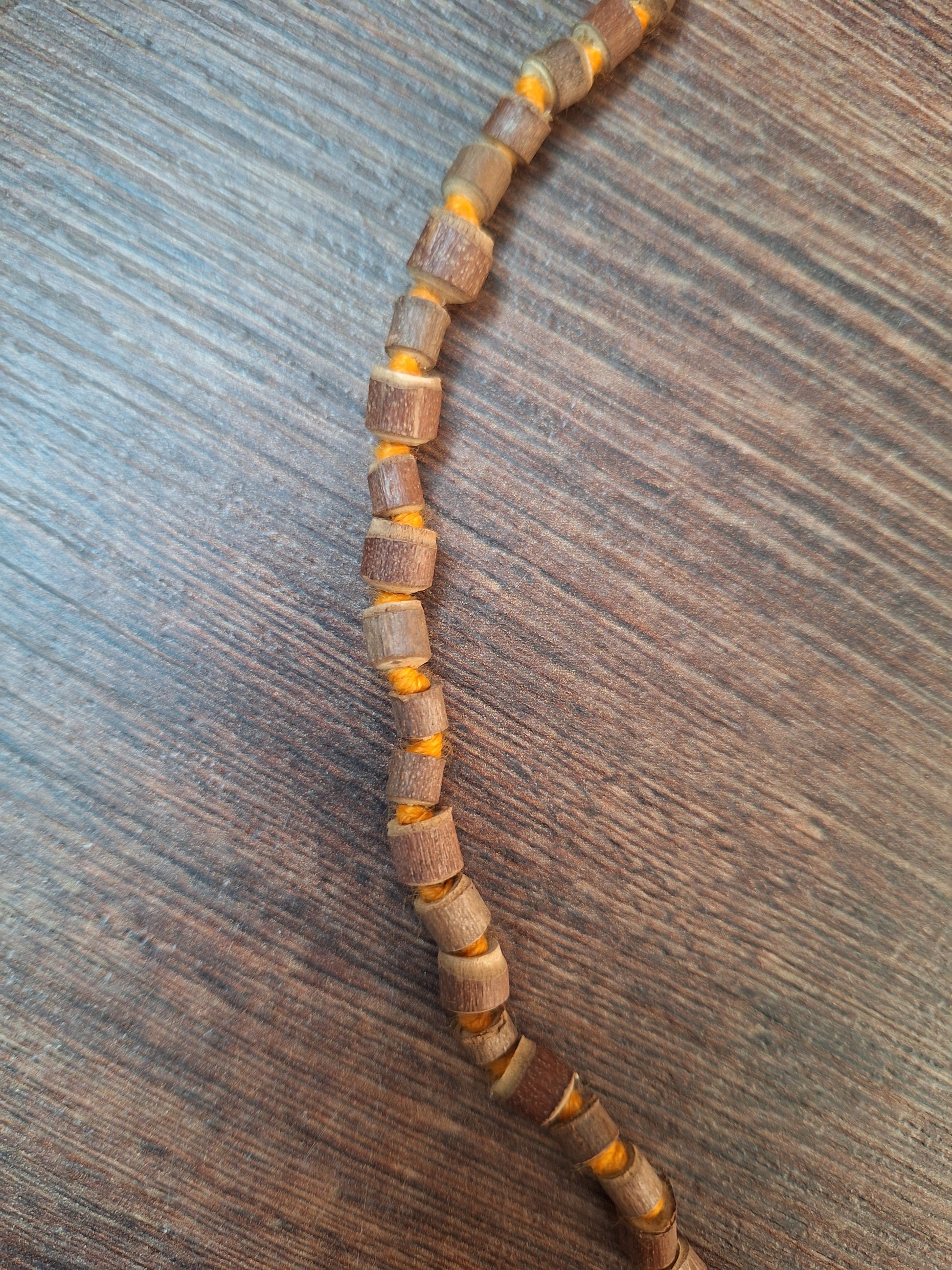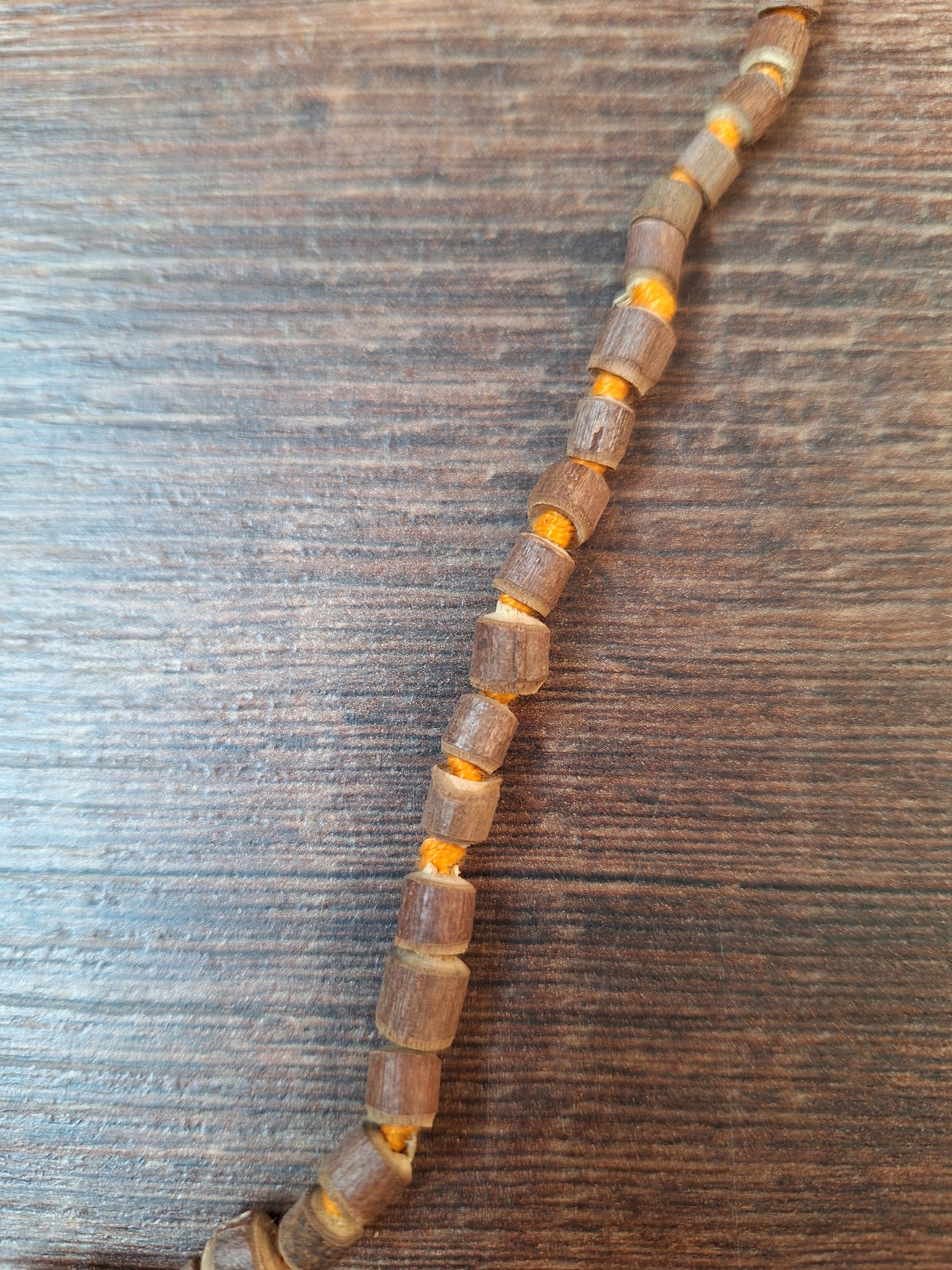Seawolf Shop
Tulsi wood mala
Tulsi wood mala
Couldn't load pickup availability
Share
The specific kind of beaded necklaces known as mala’s are quite familiair nowadays. Often they are simply worn as jewelry-with-a-spiritual touch, but they have a very ancient and rich history.
The earliest known examples of beads used in a spiritual context can be found in India, where Hindu monks moved loose shells, stones, grains or beads from one side to another to support in keeping focus and concentration and keep count of the number of repetitions of mantra’s or prayers during their spiritual practice. Another variation was to tie knots in a piece of cord or rope for that purpose. Around the 8th century BCE, In India and Nepal, these two variations were combined to stringing the beads on a cord, and thus the mala was born.
From early Hinduism the mala also found its way into Buddhism and eventually its usage spread further into the world in lots of different religions and spiritual traditions. For example; in western Christianity the string of prayer beads is called ‘rosary’ or ‘pater noster cord’ and in the Islam it’s known as ‘mishaba’ or ‘tasbi’.
In different traditions there are of course many variations in the appearance of the prayer beads; for example in how many beads are strung on the cord or from which material the beads are made. Mala’s with a buddhist origin often are made with 108 beads, in many eastern traditions a sacred number with different symbolic meanings. It refers to, for example, the 108 names of Shiva, the 108 different kinds of desire that obscure our human minds or the 108 Upanishads, sacred Sanskrit texts sharing wisdom in the last part of the Veda’s.
This mala is made with beads carved from the woody stem of the tulsi plant (ocimum tenuiflorum), also known as holy basil. Tulsi is a sacred plant in Hindu tradition, where it is sometimes considered to be an eartly manifestation of the goddess Tulsi, an avatar of Laxmi.
Tulsi wood is said to have a relaxing influence on the nervous system, helping to relieve stress and pain. Due to its calming effects on the mind, it helps to deepen focus during meditation and thus enhances the benefits of the spiritual practice.
This lightweight mala is made with pieces that are unevenly cut from the tulsi's woody stem, giving it a nice, natural look. Every piece has been individually knotted on the saffron colored cotton cord, which ends with a simple tassel at the guru bead.
Only one available.
